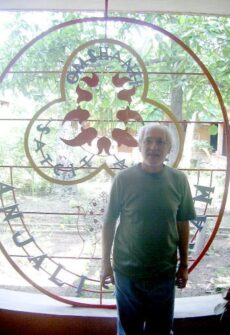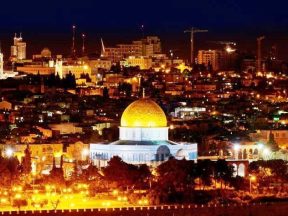India. Experiencing Silence in India’s Ashrams.
A Dominican friar shares his experience of spending his yearly vacation in an ashram in India. Under the guidance of a guru and following an exigent daily schedule, the retreatants embark on an inner pilgrimage of contemplation and self-knowledge.
One of my habits, which fortunately I have been able to practice recently, is to spend my yearly month of vacation in an ashram in India (after having lived there for three years). I usually go to the same ashram called Anjali Ashram, which is a Catholic ashram in Mysore in the state of Karnataka (Southern India). The word ashram (or ashrama) in Sanskrit, means “effort” in the sense of continued spiritual practice.
By extension, an ashram is a spiritual community united around a guru (or teacher), where the common practice of spirituality is facilitated in the everyday life.
Most of the participants are Hindus, but there are also Christian ashrams who join the community for an experience of inner pilgrimage in silence, of self-knowledge and of discovering that person who is “beyond-all-the-Name” (both aspects are interconnected).
Demanding schedule
Life in the ashram proceeds in a simple way. Usually, ashrams are surrounded by Nature, although some of them may be located on the outskirts of cities or a few kilometers from them, as is the case of the one that I usually visit.
The best way to understand what happens inside is to know the plan of activities, according to a demanding schedule. In this Mysore ashram that I attend (Anjali Ashram), we start the day’s activities at around 5:30 am with one-hour meditation (pratah samdhya) in silence (preceded by a brief introduction by the guru, in this case, a Catholic priest totally dedicated to ashram life). This meditation (dhyana) is done amidst trees.
For Indians, Nature is sacred; it is God’s creation, as if it were His “body.” It is then interesting to watch the sunrise, to move from darkness to dawn, sitting silently without moving, in contemplation, and become aware of the noise of animals that begin to appear. Of course, the most complicated thing is not so much the exterior silence but the inner silence, the quietening of our usual “monkey mind.”
The morning Eucharist follows at around 6:30 am in the ashram chapel. A Eucharist in the Indian style (sitting on the floor) with local rites—including elements from nature, fire, water—full of liturgical and spiritual-cosmic symbolism. It lasts approximately an hour. Next we go for breakfast (7:30 am), always in silence, again sitting on the floor together. Food is always simple, vegetarian and Indian.
Then we go to our rooms to do our personal hygiene and, right after, we proceed with manual work (seva ashram): cutting the grass, watering the trees and plants, preparing some gardens, doing our own laundry and other practical works that might be needed.
APA Program
The APA program (Atma Purna Anubhava) consists of a nine-day program called Upadesa, with spiritual conferences in the morning and afternoon which develop various topics. The program is attended by about fifty people, normally, novices, students of religious congregations, lay people, seekers, and even Hindus and Muslims.
At around noon, there is another meditation: madhyan samdhya. Lunch is at 12:30 pm, also in silence, sitting on the floor, followed by siesta and another meditation around 3:30 pm. After tea (4:00 pm), there is again the seva ashram. Thereafter, there is usually hatha-yoga (5:00 pm), typical of ashrams. An upadesa (spiritual talk) follows, plus an hour-long meditation in the chapel around 6:30 pm (saayam samdhya).
Dinner is at 7:30 pm. Around 8:15 pm comes the satsangh, a community meeting where each one shares his/her experiences of the day, with the Guru’s comments. From then, normally at 9:30 pm, we retire to the room. The bed is simple, usually without a mattress. Fridays are days of silence and fasting (usually partial fasting, but one can also do a total fast) and on Sundays there are some small changes in the schedule.
We may say that contemplation is the practice of this day-to-day life done with mindfulness, with seriousness and capacity for community service, with a lot of self-observation and offering the day to Someone Who is within us and permeates us in this space of the ashram in the midst of nature.
The important thing, however, is to practice a dynamic ashram wherever you are, in India, Asia or Europe. Because contemplation is, above all, a state of mind, an inner attitude which can have this institutional support or not, but which permeates our entire life. Contemplation is more about being than doing. From being we proceed to doing. It is about seeing and “tasting” the meaning of things in full and actual delight.
Rui Manuel






